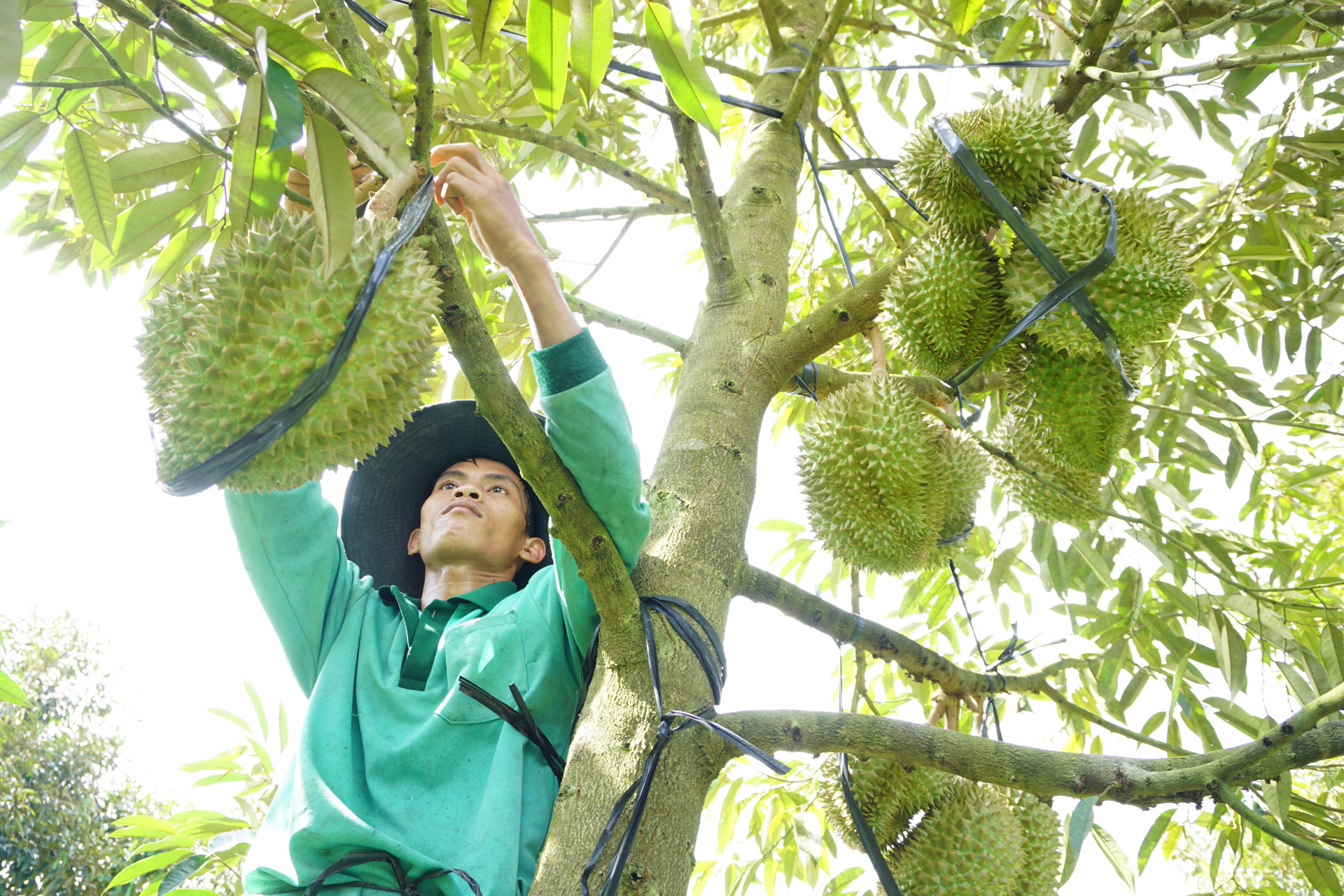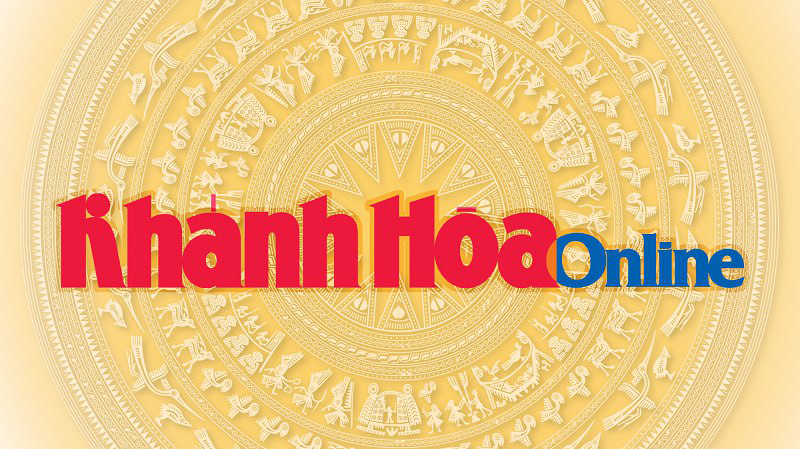Khanh Son is known as the capital of fruit trees with high economic value. To develop sustainable agriculture, the district is focusing on converting from the mindset of "agricultural production" to "agricultural economics", taking agriculture as the economic spearhead and fruit trees as the key to eliminating poverty for people, especially ethnic minority households.
Key to eradicate poverty
These days, many gardeners in Son Hiep commune are busy drawing water and focusing on taking care of durians that are preparing for harvest. Cao Hong Nhan (Ta Giang 1 village, Thanh Son commune) shared: "The 100 durian trees in my garden are in the fruit-growing stage, so they must be carefully cared for to achieve high yields and good income." Nhan said that previously, his family was poor. Thanks to converting small crops to growing durian, his family has a stable income, more than 100 million VND per year. Therefore, he is converting more ineffective tree areas to grow durian as it brings very high income. Currently, most local ethnic minority households also focus on growing durian to escape poverty sustainably.
Durian trees have helped ethnic minority households in Khanh Son district escape poverty sustainably
 |
| Durian helps ethnic minorities in Khanh Son district escape from poverty sustainably. |
Son Binh commune, in recent years, has focused on developing fruit trees with high economic value. Up to now, the entire commune has 490 hectares of durian, 8 hectares of mangosteen, 68 hectares of green-skinned grapefruit and many other fruit tree areas. Recently, farmers in the commune have applied clean production solutions, meeting VietGAP standards. Currently, the entire commune has 1 cooperative with VietGAP certification and 5 durian growing cooperative groups, including 1 cooperative group with VietGAP certification. In recent years, local people have focused on developing fruit trees with high economic value, partly increasing income, which is the key to poverty eradication for many ethnic minority households.
Until now, the whole district has developed 2,600 hectares of durian, 339 hectares of green grapefruit, 61 hectares of rambutan, 27 hectares of mangosteen, 255 hectares of coffee, 125 hectares of purple sugarcane and many other areas of other fruit trees. The district's agricultural products are known to consumers inside and outside the province. In particular, Khanh Son durian has registered for trademark protection, was voted as Vietnam's Golden Agricultural Brand, is produced cleanly by farmers, applies VietGAP standards, and some gardeners have been granted codes of growing areas for official export.
Currently, many types of fruit trees in the district bring income from several tens of millions to hundreds of millions of VND/ha/year. In particular, durian has brought quite high income for local people; it is a crop that helps escape poverty for many ethnic minority households. Local statistics show that by the end of 2023, the entire district had 2,429 poor households, accounting for 31.63% of the total number of households. In the first 5 months of this year, the district has reduced an additional 220 poor households, reaching 40% of the target assigned by the province. It is expected that by the end of this year, the poverty rate in the entire district will continue to decrease to 22.99%.
Innovating thinking of local people
According to Mau Thai Cu - Secretary of the District Party Committee, Chairman of Khanh Son District People's Council, to continue promoting its strengths in the agricultural sector, the district is focusing on implementing a project to transform and develop the agricultural sector in the direction of: Shift from "agricultural production" thinking to "agricultural economics" thinking, producing high-value agricultural products, diversifying along the value chain, in accordance with market requirements; shifting from the agricultural supply chain to the industry value chain. Along with that, shifting from agricultural production focusing on increasing output to agriculture applying high technology, ecology, and sustainability; moving from single-sector development to multi-sector integration, from one value to integrating many values; shifting from input support to both input support and output connection support... In addition, agricultural development is associated with the development of eco-tourism, agricultural tourism, and cultural tourism. culture - resort, local experience. “One of the district's important goals is to bring the average income per hectare of cultivated land by 2025 to 1.7 times higher than today. By 2030, the average income/hectare of cultivated land is expected 1.6 times higher than in 2025," Mr. Cu emphasized.
In recent times, the district has focused on developing clean agriculture and organic agriculture, focusing on transferring new techniques and technologies in preserving and processing agricultural, forestry and fishery products with the participation of businesses in chain of production and consumption of products for people, including more than 430 hectares of production according to VietGAP standards. Implementing the policy of supporting crop conversion in the period 2019 - 2024, the district has converted more than 1,150 hectares of ineffective crops to valuable fruit trees.
Hai Lang
Translated by T.T











Thông tin bạn đọc
Đóng Lưu thông tin